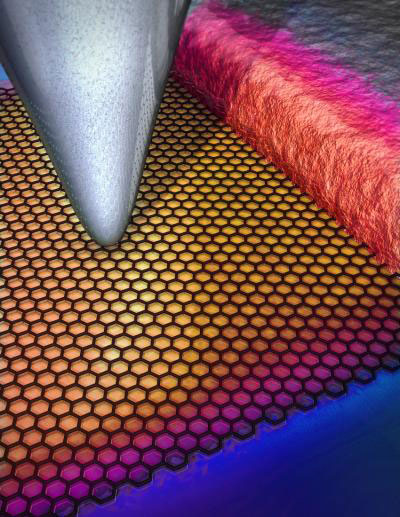 With the first observation of thermoelectric effects at graphene contacts, University of Illinois researchers found that graphene transistors have a nanoscale cooling effect that reduces their temperature.
With the first observation of thermoelectric effects at graphene contacts, University of Illinois researchers found that graphene transistors have a nanoscale cooling effect that reduces their temperature.
Apr 3rd, 2011
Read more
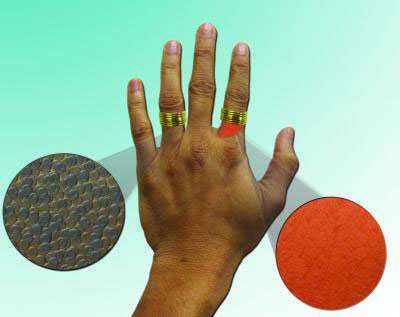 Nanoparticles could offer big hope in a small package to the many millions of people who are allergic to the nickel in everything from jewelry to coins and cell phones.
Nanoparticles could offer big hope in a small package to the many millions of people who are allergic to the nickel in everything from jewelry to coins and cell phones.
Apr 3rd, 2011
Read more
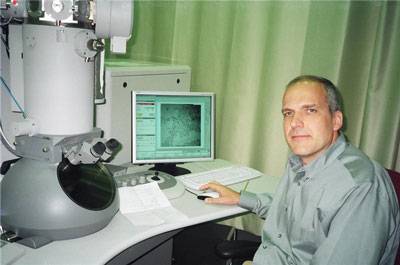 Researchers at the Hebrew University of Jerusalem have achieved a breakthrough in the field of nanoscience by successfully altering nanocrystal properties with impurity atoms - a process called doping - thereby opening the way for the manufacture of improved semiconductor nanocrystals.
Researchers at the Hebrew University of Jerusalem have achieved a breakthrough in the field of nanoscience by successfully altering nanocrystal properties with impurity atoms - a process called doping - thereby opening the way for the manufacture of improved semiconductor nanocrystals.
Apr 3rd, 2011
Read more
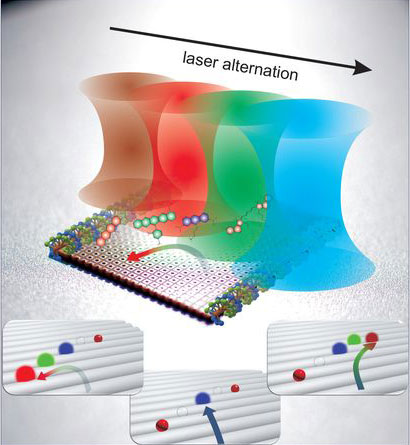 Physiker haben in einem neuartigen Ansatz gezeigt, wie die Ausbreitungsrichtung von Licht bzw. Lichtenergie auf der Ebene einzelner Molekuele manipuliert werden kann. Dazu platzierten die Biophysiker eine Kaskade von vier verschiedenen Fluoreszenz-Farbstoffmolekuelen auf einer DNA-Plattform im Nanometer-Massstab. Mithilfe eines sogenannten "Springer"-Farbstoffs gelang es ihnen, die Richtung des Lichtweges bzw. des Energietransfers zu kontrollieren.
Physiker haben in einem neuartigen Ansatz gezeigt, wie die Ausbreitungsrichtung von Licht bzw. Lichtenergie auf der Ebene einzelner Molekuele manipuliert werden kann. Dazu platzierten die Biophysiker eine Kaskade von vier verschiedenen Fluoreszenz-Farbstoffmolekuelen auf einer DNA-Plattform im Nanometer-Massstab. Mithilfe eines sogenannten "Springer"-Farbstoffs gelang es ihnen, die Richtung des Lichtweges bzw. des Energietransfers zu kontrollieren.
Apr 3rd, 2011
Read more
Scientists package HDL with gene-silencing siRNA to target tumors, spare normal tissue.
Apr 2nd, 2011
Read more
NanoDays is a nationwide festival of educational programs about nanoscale science and engineering and its potential impact on the future. It features exhibits and educational programs at more than 200 locations throughout the nation through April 3rd, at science museums, research centers, and universities.
Apr 2nd, 2011
Read more
A microchip fabricated with femtosecond lasers at RIKEN allows the rare observation of microalgae behavior.
Apr 2nd, 2011
Read more
Using a simple glass capillary, atomic physicists at RIKEN are developing an ultra-narrow ion beam that pinpoints a part of organelles in a living cell, enabling biologists to visualize how the damage affects cell activities.
Apr 2nd, 2011
Read more
Engineers at Oregon State University have invented a new way to use surface-mount adhesives in the production of low-temperature, microchannel heat exchangers - an advance that will make this promising technology much less expensive for many commercial applications.
Apr 1st, 2011
Read more
 Playing the Nanorama-Loft quiz, you can discover numerous everyday nano products. Every product comes up with a question. Take the nano challenge and test your knowledge!
Playing the Nanorama-Loft quiz, you can discover numerous everyday nano products. Every product comes up with a question. Take the nano challenge and test your knowledge!
Apr 1st, 2011
Read more
Focusing on interdisciplinary research is now leading to breakthroughs in bio nanotechnology research. A new method for drug development has become a reality.
Apr 1st, 2011
Read more
Research conducted by Jan-Laurens van der Steen of the MESA+ Institute for Nanotechnology at University of Twente has shown that electrons in silicon which is less than ten nanometres thick take on unusual characteristics.
Apr 1st, 2011
Read more
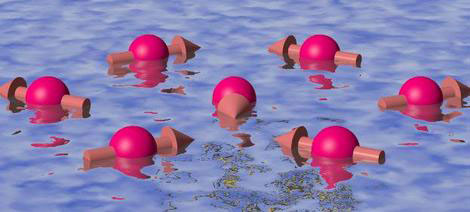 Scientists from Oxford University have mapped a state of matter called 'quantum spin liquid', whose existence was proposed in the 1970s but which has only been observed recently.
Scientists from Oxford University have mapped a state of matter called 'quantum spin liquid', whose existence was proposed in the 1970s but which has only been observed recently.
Apr 1st, 2011
Read more
Eight British companies are set to receive a total of nearly GBP 200,000 in government investment for feasibility studies aimed at helping to stimulate innovation with technologies that will be able to address potential environmental health and safety (EHS) aspects of the development of nanoscale technologies.
Apr 1st, 2011
Read more
 Quantum physicists from the University of Innsbruck have set another world record: They have achieved controlled entanglement of 14 quantum bits (qubits) and, thus, realized the largest quantum register that has ever been produced. With this experiment the scientists have not only come closer to the realization of a quantum computer but they also show surprising results for the quantum mechanical phenomenon of entanglement.
Quantum physicists from the University of Innsbruck have set another world record: They have achieved controlled entanglement of 14 quantum bits (qubits) and, thus, realized the largest quantum register that has ever been produced. With this experiment the scientists have not only come closer to the realization of a quantum computer but they also show surprising results for the quantum mechanical phenomenon of entanglement.
Apr 1st, 2011
Read more
Even though nanoparticles are increasingly entering the environment, scientists still have a lot to learn about their biological effects. Now Chinese researchers have found that exposure to cerium dioxide nanoparticles shortens the lifespan of the roundworm Caenorhabditis elegans.
Apr 1st, 2011
Read more
 With the first observation of thermoelectric effects at graphene contacts, University of Illinois researchers found that graphene transistors have a nanoscale cooling effect that reduces their temperature.
With the first observation of thermoelectric effects at graphene contacts, University of Illinois researchers found that graphene transistors have a nanoscale cooling effect that reduces their temperature. 






 Subscribe to our Nanotechnology News feed
Subscribe to our Nanotechnology News feed